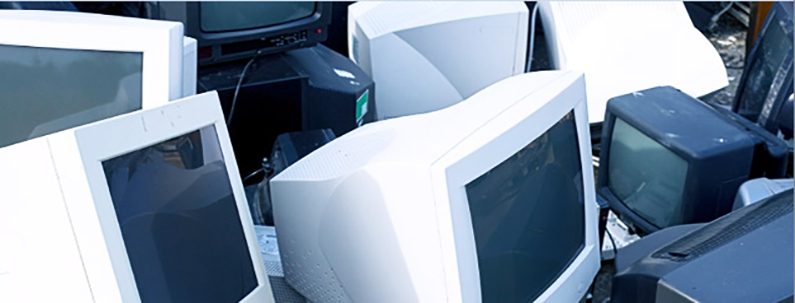Proper disposal of universal waste and electronic waste is crucial for the protection of our environment and human health. At Western Environmental Services, we offer comprehensive Universal Waste & Electronic Waste Disposal services designed to help homes and businesses safely and responsibly recycle their waste while adhering to all relevant regulations. Our team of experienced professionals is committed to providing environmentally friendly solutions that minimize waste, reduce health and safety risks, and promote a sustainable future.
Key Features of our Universal Waste & Electronic Waste Disposal Service:
- Responsible Recycling: We adhere to strict recycling standards, ensuring that waste is processed and disposed of in an environmentally responsible manner.
- Regulatory Compliance: Our team ensures waste disposal activities are fully compliant with federal, state, and local regulations.
- Secure Data Destruction: We provide secure data destruction services for electronic waste, safeguarding your sensitive information and maintaining compliance with data privacy regulations.
- Wide Range of Materials: Our services cover a broad range of universal and electronic waste materials, including batteries, fluorescent lamps, CRTs, and various electronic devices.
What Common Items Can’t Be Disposed of In the Garbage?
Lights, Batteries, and Electronics:
- Fluorescent lamps and tubes, including fluorescent tubes, compact fluorescent lamps, metal halide lamps, and sodium vapor lamps.
- Batteries, including AAA, AA, C, D, button cell, 9-volt, and all others, both rechargeable and single use.
- Electronic devices, including computers, printers, VCR’s cell phones, telephones, radios, and microwave ovens.
- Computer and television monitors.
Mercury-Containing Items:
- Electrical switches and relays. Mercury switches can be found in some chest freezers, pre-1972 washing machines, sump pumps, electric space heaters, clothes irons, silent light switches, automobile hood and truck lights, and ABS brakes.
- Thermostats and thermometers that contain mercury.
- Pilot light sensors that can be found in gas appliances such as stoves, ovens, clothes dryers, water dryers, water heaters, furnaces, and space heaters.
- Mercury gauges such as barometers, manometers, blood pressure, and vacuum gauges contain mercury.
- Mercury-added novelties, including greeting cards that play music when opened; athletic shoes (made before 1997) with flashing lights in soles; and mercury maze games.
Other waste:
- Compressed gas cylinders, including propane tanks used for BBQ or plumbing.
- PCB-containing materials, including paint and ballasts that contain polychlorinated biphenyls (PCB).
- Photo waste that is silver bearing.
- Nonempty aerosol cans that contain hazardous materials, especially those labeled with words like TOXIC or FLAMMABLE.
Why Choose Western Environmental Services for Your Universal Waste & Electronic Waste Disposal Needs?
- Over 35+ years of experience in universal waste and electronic waste disposal
- Responsible and sustainable waste disposal solutions that protect our community and planet
- Dedicated to delivering exceptional customer service
- Your one-stop-shop for all your universal waste and electronic waste disposal needs
Ensure compliance and environmentally responsible disposal of universal waste and electronic waste by contacting Western Environmental Services. Call us at (626) 339-2340 or click the contact button below to learn more about our services.

